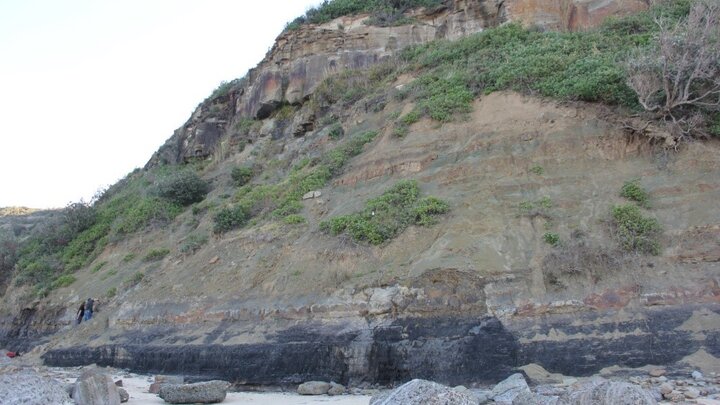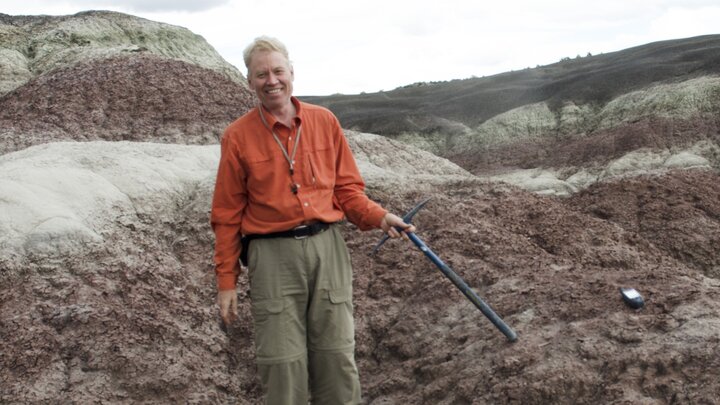Image above: Vivi Vajda and Stephen McLoughlin examining the outcrop section at Frazer Beach, in the Munmorah State Recreation Area. Photo credit: Chris Fielding.
Faculty Chris Fielding, Tracy Frank, and Allen Tevyaw were recently published in the journal Nature Communications.
"Age and pattern of the southern high-latitude continental end-Permian extinction constrained by multiproxy analysis" provides new insights into the nature and timeline of environmental catastrophes that formed the end-Permian extinction in the high southern paleo-latitudes.
This "is the first study to establish directly the timing of the floral extinction relative to that of the marine extinction event and the Permo-Triassic boundary (251.9 million years ago)," Fielding wrote in a "Behind the Paper" post about the research for Nature's Ecology and Evolution online community. The group used palynology and high-precision CA-ID-TIMS dating of euhedral zircons to show that the collapse of the austral Permian Glossopteris flora happened before 252.3 Ma, according to the abstract.
The research was conducted with colleagues from the Swedish Museum of Natural History, University of Texas at Arlington, Geoscience Australia, Bocking Associates, and Boise State University.




